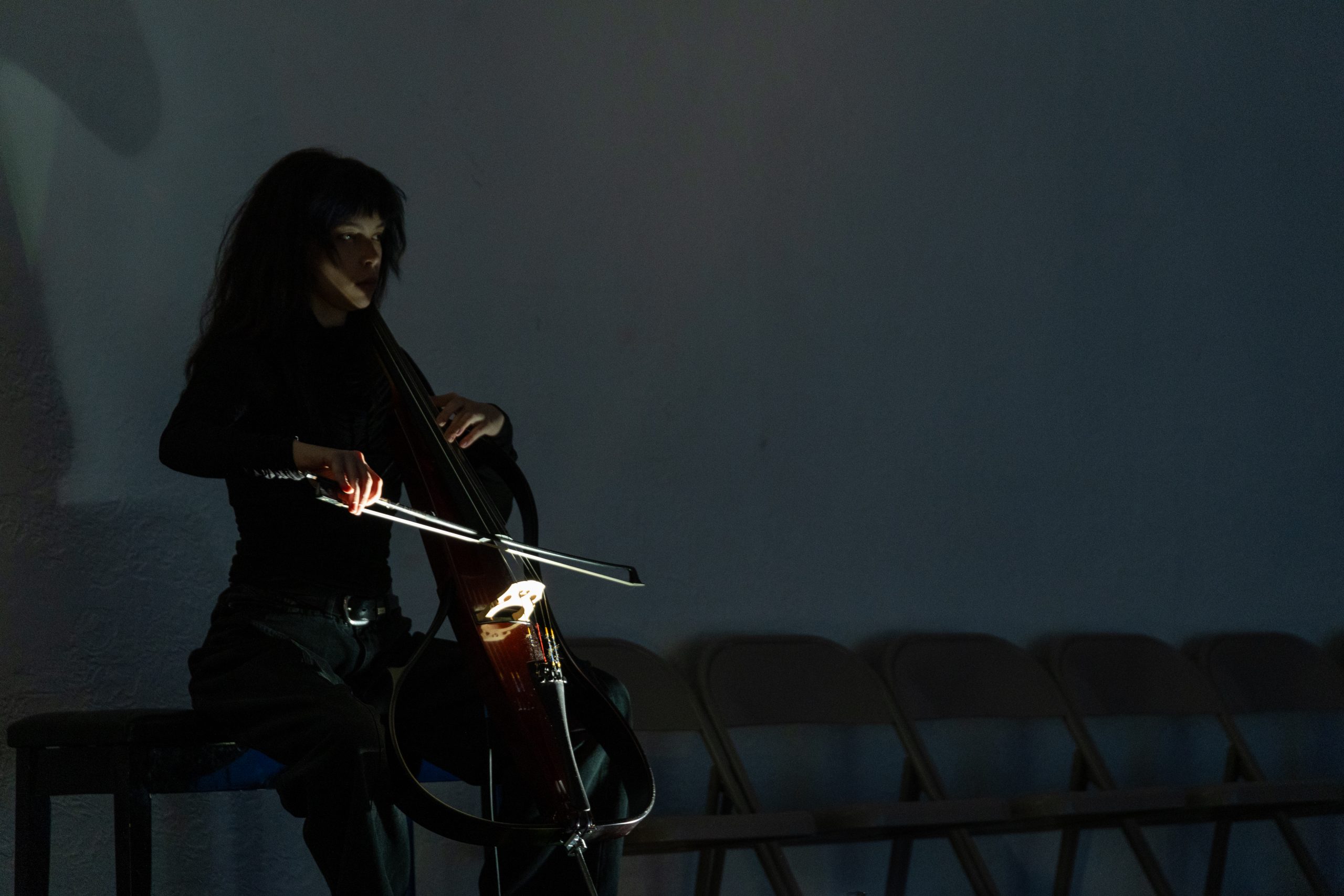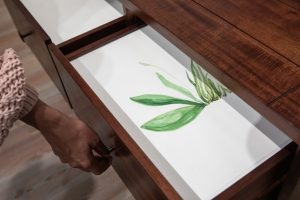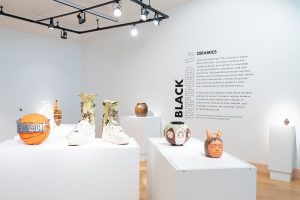Fragment 5: Whom should I choose for my Judge?
by Samuel Taylor Coleridge
Whom should I choose for my Judge? the earnest, impersonal reader,
Who, in the work, forgets me and the world and himself!
Ye who have eyes to detect, and Gall to Chastise the imperfect,
Have you the heart, too, that loves, feels and rewards the Compleat?
What is the meed of thy Song? ‘Tis the ceaseless, the thousandfold Echo
Which from the welcoming Hearts of the Pure repeats and prolongs it,
Each with a different Tone, compleat or in musical fragments.¹
Chicago-based experimental musician, Dorothy Carlos, has been very active in the year following her sound installation at the Garfield Park Conservatory titled, “My Ideal is Windy.” She has performed at the National Mexican Museum of Art, Constellation, Elastic Arts, and various DIY spaces across the city and beyond sharing songs that “use digital techniques as an opportunity to construct imaginary realities and capture a sense of intimacy.”² On February 20th, some of those songs and more were released on Carlos’ debut album, Ear World, via the Brooklyn-based label, 29 Speedway. Informed by her background in classical cello, anthropology, and sound art, Carlos’ ability to merge the sounds of ambiance, noise, computer, and free improvisation make the songs “range from the song-like to abstract.”³
Considering the album as a whole, Ear World is just that—an ear world or ear worlds, crafted with the contemplative, liturgical, devotional sound of humming and softly-voiced whispers layered with the sounds of electric cello scratches, pluckings, and speckled noises looped for a while and then treated from another angle… and another and another angle, and another, and another, abstracted and prismatic and with all parts in intimate communication with one another, an experience that is transmitted to the listener.
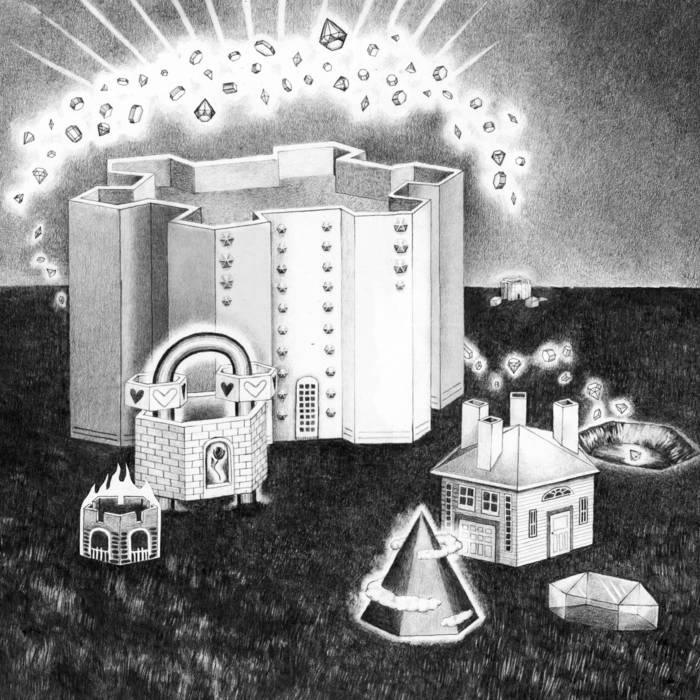
There is a consistent use of ambiance throughout the album such as the fragmented, staccatoed, repetitions of noises that sound like printers in “Alter, Alter” or the solemn tone of closing notes in a classical orchestral concert in “Balm.” Pause and go repetition of sound fragments, and fragments of those same fragments, is staccatoed like the song is stopping to take a breath every few stops on a hike up a tall mountain. “My Buddy (Miss You in Ear World)” brings a sound reminiscent of freak-folk genre techniques, (Animal Collective’s “Mouth Wooed Her” comes to mind); the low growls, hums, and undulating rhythms draw you in like a tide.
In reviewing this album, I was drawn back to the music and image of “Quiet Storm” genre band, Sade. Minimalist, easy listening, wistful, emotive, the music is described as “feeling music” by music journalist Clover Hope in his review of Sade’s 1984 album, Diamond Life.⁴ It’s the kind of music that relaxes you and carries you away in it, while enveloping you in the emotive centers of the songs. When I listen to Carlos’ music it’s hard to not be enraptured, within the layers obfuscation emotion is still direct, no metaphors, no similes instead. I get the sense of the feelings in the music being as they are. Songs such a “Balm” and “I” and “II” oscillate from an ambient calm to brash, tuning in and out of various tones associated with emotions, for example: the sound of longing, the sound of sympathy, and the sound of tranquility can be heard and felt through the songs. The songs feel diaristic and personal and give words to feelings without the use of words. A series of fragments communicating how one feels towards an experience of their life.
The composer Morton Feldman said of his experience about experimental sound artist Iannis Xenakis, who among other things integrated music with architecture, designing music for pre-existing spaces, and designed spaces to be integrated with specific music compositions and performances, (notably similar format to Carlos’ sound installation piece included in Ear World, “My Ideal is Windy,” which was originally commissioned by the Garfield Park Conservatory): “I’m enthralled with the sound of it. I’m not even aware of whether it’s loud or soft in that sense. I’m not involved with its dynamic trust, I’m involved with its involvement. In other words, I become you when I listen to Xenakis.”⁵ When listening to Ear World the sentiment is shared. Carlos’ songs throughout the album are immersive. In listening, you join the ambiance of life, the space surrounding and within you, and while simultaneously, the recursive sounds draw you into the feelings they are expressing, adding to the dimension of the pieces. The plucking and use of airy static, ambience, and hums sounds like the meeting of an out of reach radio station when turning channels. The use of abstracted music fragments, pieces of sound cut up and seen through different angles, light shining through like a prism. It’s relaxing—even in moments of an ominous plucking of strings similar to one’s frequently used in horror film trailers and electronic alarms—again, with the help of a roomy ambiance.
In regards to the use of consistent fragmentation and recursion in sound, Carlos’ work is situated within the veins of materialist and collage artists of various disciplines, including but not limited to Owen Land, Pierre Schaeffer, and Arthur Lipsett, who created one of the first critically recognized collage films Very Nice, Very Nice, which was nominated for Best Live Short at the Academy Awards in 1961.⁶ The film consists of thoughts about “day-to-day life” interpreted through snapshots and sound collages pondering if life is better than it was thirty years ago with repeating images and sounds shown at varying speeds and with widely varying effectual intentions.⁴ A technical difference between the film, its soundtrack, and similarly crafted electro-acoustic songs in comparison to Carlos’ album is in the level of abstraction of the fragments presented and shared through the album, and the abstractness of the pieces chosen as material for songs. Ear World takes small sounds and expands their reach. It’s like when something is too close to your face or too far away; it’s hard to see something for what it is. Additionally, with the original context for the materials used in the works being abstracted and left out of view to various degrees, the audience member or listener is enveloped into a world by being presented with a bombardment of stimuli, familiar but decontextualized, which adds layers of speculation, subjective evocation, and poetic ambiguity.
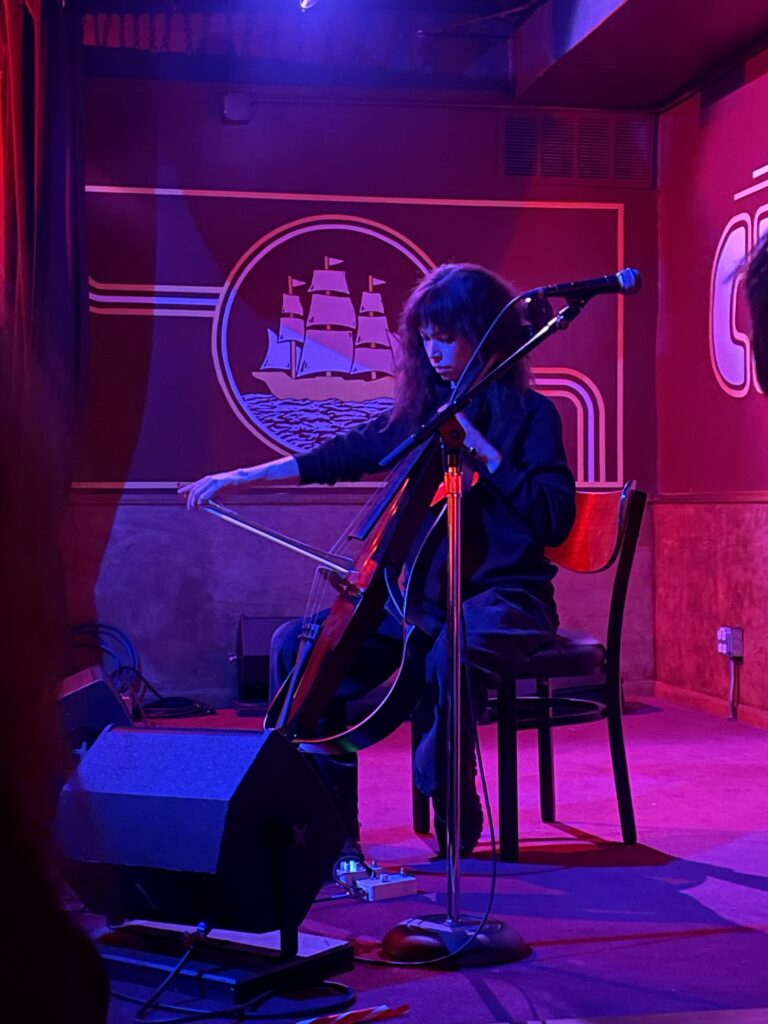
The songs on the album, as sound installations and when performed, hold presence and command. How do they do this? I would suggest it is the emotive center; each song has a specific tone(s) and/or a large ambient presence. These tones, employed through techniques as ASMR, create a roomy space to hold feelings, pieces of life, feelings from memory. The combination of a soft voice and glitching in songs such as “Balm” and “II” bring an electrical charge to the feelings in the songs. Furthermore, a microphone is analogous to a microscope, blowing up tiny sounds making known “there is life here.” The layers of ambient sound with various fragmented electronic stratifications, seemingly from the same longer song, create an atmospheric tension between the within (ambiance) and the without (noise) that combine and thus communicate with one another, adding a layer of depth. They radiate introspection, emotion, melancholy, wistfulness, and pensiveness combined with a hypnotic hum.
A drawing point for the work is that the techniques employed create a prismatic experience of the album: it can sound different every time you listen to it depending on how you conceive of the structure of the piece and attention for the sounds. “Alter, Alter” could be thought of as clear-headed and motivated on a rainy day, “I” could have a tone of mystery and intrigue, completely the opposite, or something in between. Ear World taps into a collective understanding of what music is fundamentally; how tones operate to transmit emotions (e.g. minor chords relate to melancholy and major chords relate to feelings such as triumph and joy). The techniques she employs form the prismatic experience of listening to Ear World—the way she simultaneously obfuscates and transmits emotions with her techniques: scratching her cello, turning up room noise, whispering into her microphone—repetitively, create angles from which one conceives the structure of the songs, and thus their meaning. In listening to Carlos’ work live and on the record you get a sense of witnessing the electrical systems beneath our feet and that surround us, the electrical charge and exchange that one has in trying to communicate one’s feelings. This is a sentimental, earnest sound, an extension of the central nervous system interacting with the world tuned in for communication with oneself and with others.
What adds to the immersive experience of Ear World are the transitions between fragments that are not blunt, but instead permissive, mutating and fluid changes. There is something to use or fragments to sum up life, if you conceive of life as atmosphere. The feelings are presented first and foremost with an air of contemplation. It is diaristic, sequential notes, imbued with reflection, with life. (Detection, amplification, and transfiguration of these vibrations given out by the materials—i.e. how the various techniques are layered and employed as noisy blocks within an atmospheric current of humming and quivering—combined with the rapacity of the changes and it’s ephemerality, create moments where emotive tones come in and through like a breath inward or a sigh.)
Our experiences are interpretations. In Ear World we get the sense of the very strata that music is composed of, being used to quietly speak to life and to feel and reflect on how one feels on their experiences with the use of those pieces, which is what makes it feel insular, alive, and emotive and ever-changing. We are in the Ear World, as if immersed in the world of a novel, we are within a page, that moment our page starts to turn, and we are led to another world within the world translated into song. Ear World is an evocative and cohesive debut. This is music, abstracted music, crafted with an emotive and timeless approach.
Ear World was released on February 20, 2025 through 29 Speedway. You can find Ear World on Bandcamp under Dorothy Carlos.
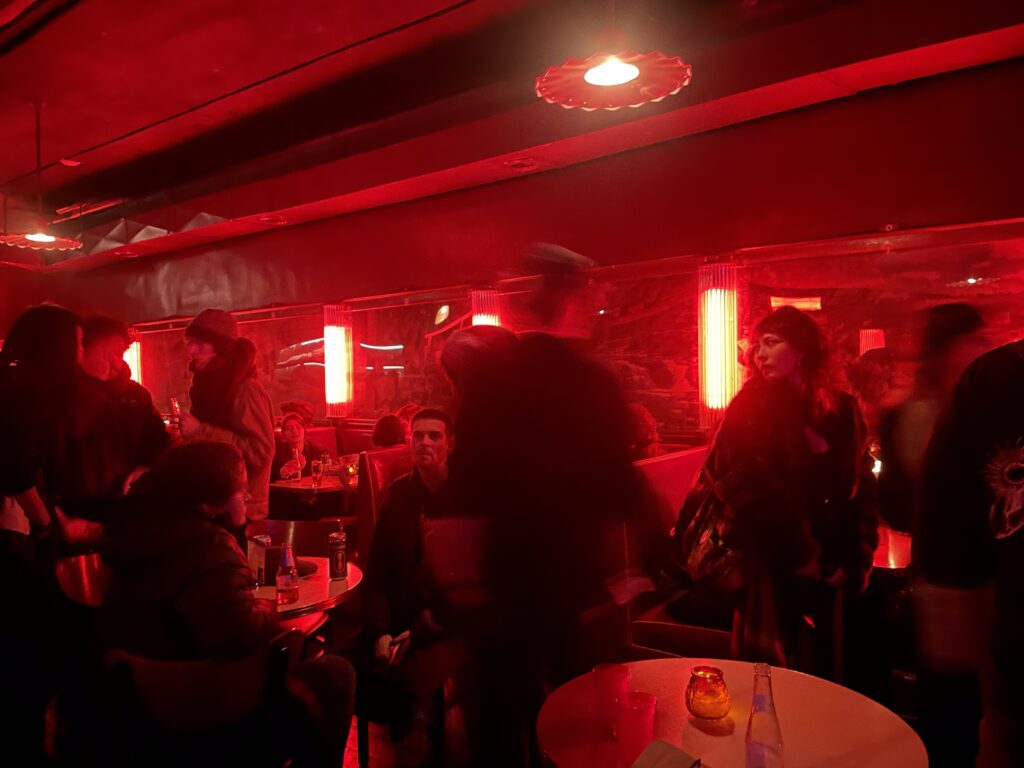
Works Cited
1. Coldrige, Samuel. “Fragment 5: Whom Should I Choose for My Judge?” Edited by Ernest Coldrige, Representative Poetry Online, University of Toronto Libraries, 2025, rpo.library.utoronto.ca/content/fragment-5-whom-should-i-choose-my-judge. Accessed 22 Mar. 2025. From Notebook 24, one of Coleridge’s numerous metrical experiments.
2. Carlos, Dorothy. “Ear World, by Dorothy Carlos.” Bandcamp, 29 Speedway, 2025, dorothycarlos.bandcamp.com/album/ear-world. Accessed 12 Mar. 2025. Excerpt of “Ear World” by Dorothy Carlos’ album description.
3. Ibid.
4. Hope, Clover. “Sade: Diamond Life.” Pitchfork, 9 Oct. 2020, pitchfork.com/reviews/albums/sade-diamond-life/. Accessed 11 Mar. 2025.
5. Morton Feldman, and Iannis Xenakis. “Morton Feldman and Iannis Xenakis In Conversation.” Ubu, Edited by Vincent Gasseling and Michael Nieuwenhuizen, 7 July 1986, Accessed 11 Mar. 2025.Cited quote is from page 3 of a transcript of a conversation between Morton Feldman and Iannis Xenakis held Friday, July 4, 1986 at De Kloveniersdoelen, Middelburg, The Netherlands.
6. “Very Nice, Very Nice :: 25 Fps.” 25 Fps, www.25fps.hr/en/film/very-nice-very-nice. Accessed 11 Mar. 2025.
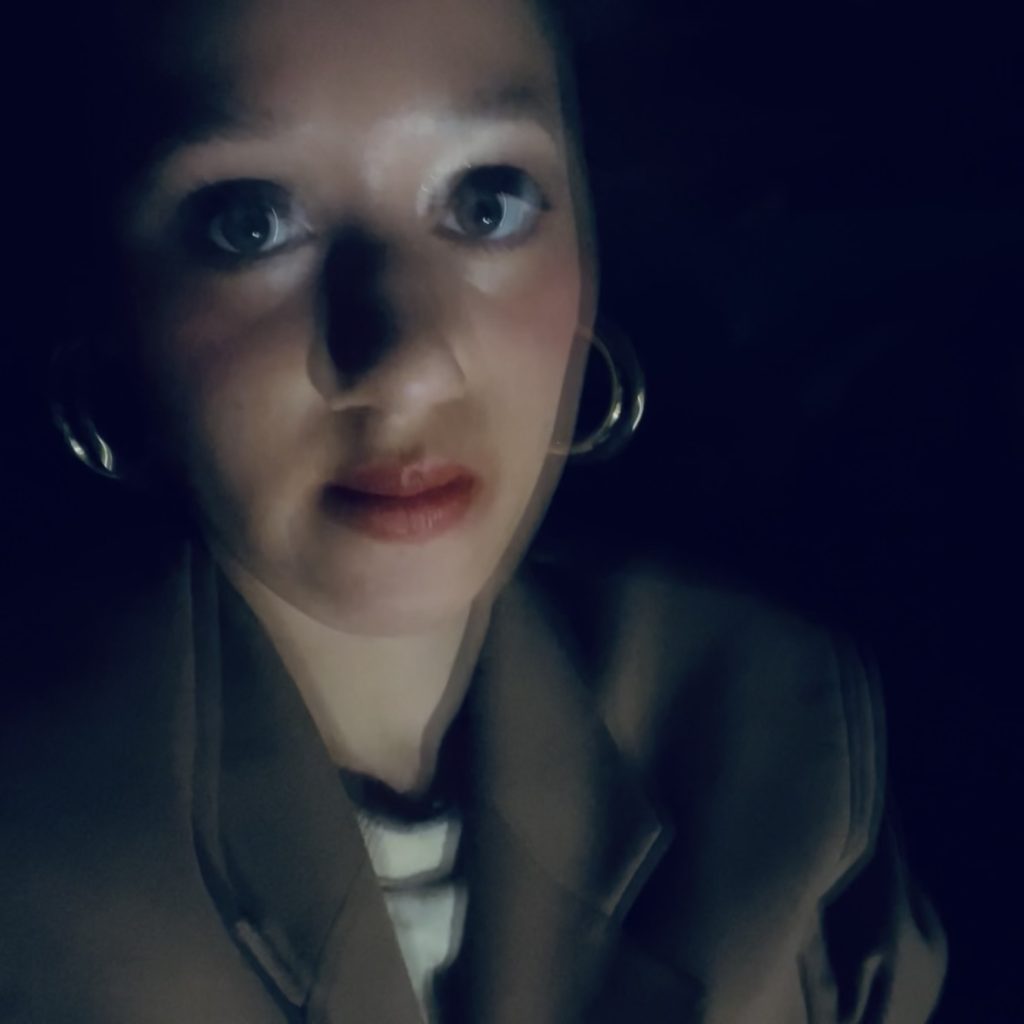
About the author: Nadia John (they/them) is a writer, arts administrator, arts archivist and a member of the editorial collective, Sixty Inches from Center. They enjoy building community through the arts. Some of the interests which inform their work can be found between the intersections of narratology, Deleuzian potentialities and psycholinguistics. They have published four books of poetry, most recently, Long Form, by way of Hiding Press.
